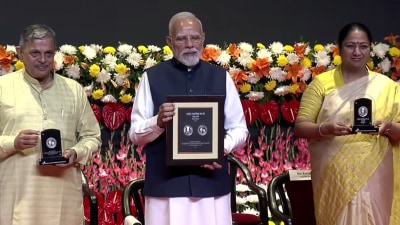Prelude to a Riot
Perched in the American Northwest — where it rains so much, locals groan they live in the Northwet — the city of Seattle is someth...

Perched in the American Northwest — where it rains so much, locals groan they live in the Northwet — the city of Seattle is something of a New York on second gear. It is also home to political scientist Paul Brass, one he leaves year after year, decade after decade, to further his obsessive research into the religious ‘‘situation’’ in Aligarh.
Brass has been coming to the western Uttar Pradesh town — known for a university, a lock-making industry and at least one big Hindu-Muslim riot a decade — for 40 years. With meticulous zeal and patience, he has interviewed everybody, local baniya leaders, Aligarh’s Muslim clerics, politicians of every hue, mohalla politicians who have never previously been interviewed and never again will be.
The Production of Hindu-Muslim Violence in Contemporary India is the most recent of his books based on his work in Aligarh. It induces intuition. The moment you look at it, you seem to know what to expect. Brass does not disappoint you.
It is quite clear where the author’s sympathies lie though he does appear to sometimes hedge rather than state definitive conclusions. Also, while the facts and figures he furnishes are instructive, one does wonder if Brass is guilty of over-interpretation.
Not that the review of history is pointless. Indeed, to those who see religious violence only in a post-’90 context, Brass does a service. The first major riot in Aligarh took place on September 22, 1925, soon after the Khilafat movement collapsed. ‘‘It even drew the attention of the London Times,’’ writes Brass of the incident, ‘‘Although the London Times referred to this riot as having occurred in ‘the Moslem university city of Aligarh in connexion with a Hindu procession’, it appears the riot had nothing to do with the university itself, having occurred in the old city in the Madar Darwaza area (referred to as ‘Madho Dharwaza’ in the report) and having in fact begun during a Ram Lila procession. The official death toll in this riot was six, of whom four were Muslims, two Hindus.’’
Some 80 years on, it is sobering just how contemporary this report appears, right down to the contested role of the central institution, the ‘‘provocation’’ that caused the ‘‘retaliation’’ and proportional share of victims.
Why has Brass chosen Aligarh as a case study for all of India? He refers to an earlier study of ‘‘24 cities and towns in India… characterised as ‘riot-prone’. Of the 24, six were located in UP… Within UP figures… placed the town of Aligarh at the top’’. Another count puts it at number two, under Meerut.
Yet, on page 68, Brass writes, ‘‘Intense rioting in Aligarh has at times deviated from the pattern in the rest of the country, at times mirrored it… It is the case, therefore that intense riotous activity in Aligarh must be explained partly in terms particular to the city and partly in relation to activities taking place simultaneously in the state and in the country as well as in Aligarh.’’ Profound.
It is an old Indian ritual to trace the origins of a riot to the internal contradictions of the local industry: Varanasi’s handloom sector, Firozabad’s glass bangle units. Brass predictably focuses on Aligarh’s lock manufacturing business.
Here, as elsewhere, his grouse is that while initial Muslim violence is documented and criticised in the riot and post-riot phase, the pre-initial provocation by the ‘‘institutionalised riot system’’ is ignored. Brass uses that loaded phrase to describe the ‘‘RSS family’’. If the logic of his argument is extended, he also speaks for the Congress in, roughly, the pre-1970 period.
Insidious fellows, these Hindu nationalists. They’re just everywhere, aren’t they!



- 01
- 02
- 03
- 04
- 05




























